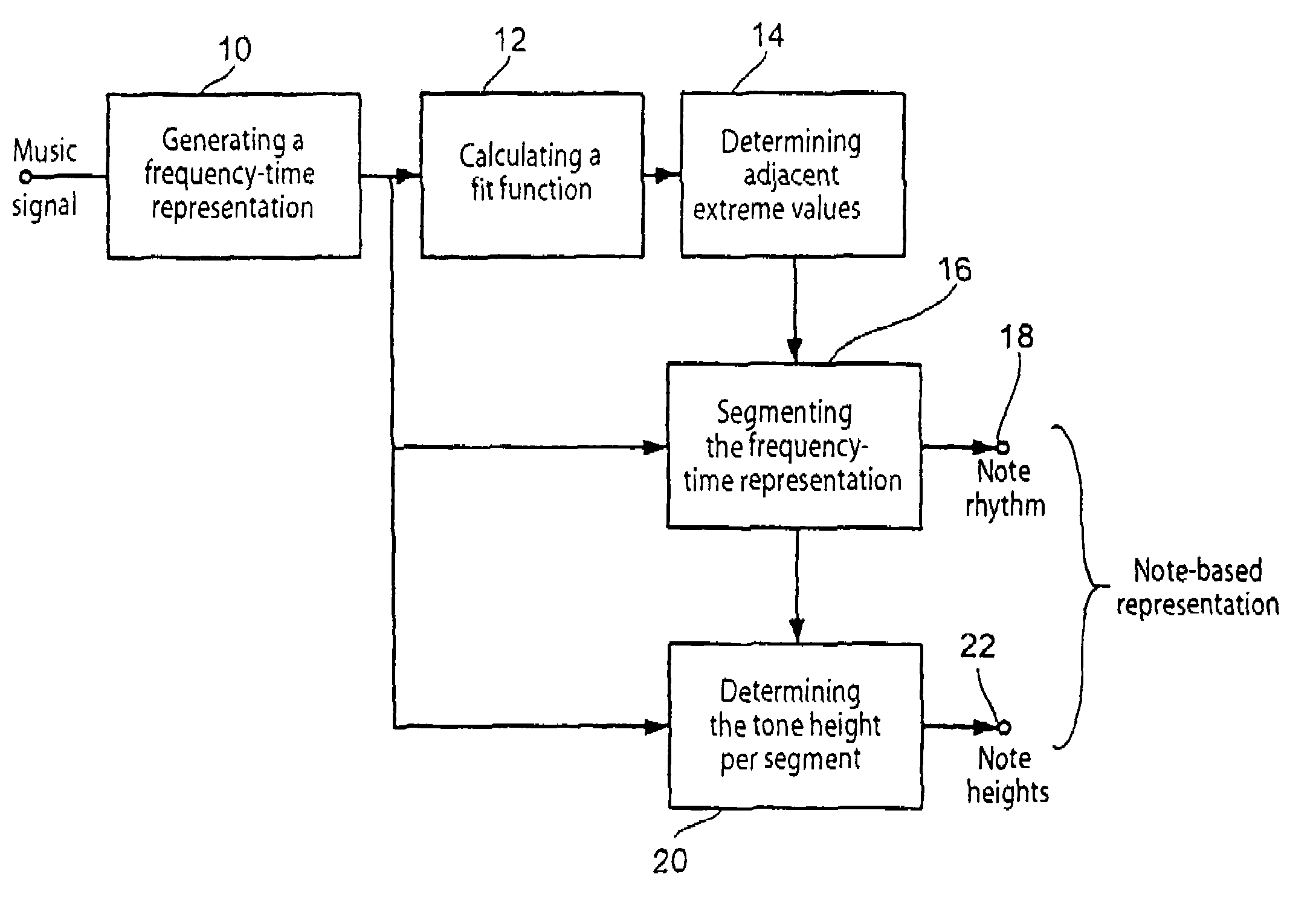Method for converting a music signal into a note-based description and for referencing a music signal in a data bank
- Summary
- Abstract
- Description
- Claims
- Application Information
AI Technical Summary
Benefits of technology
Problems solved by technology
Method used
Image
Examples
Embodiment Construction
[0036]FIG. 1 shows a block diagram of an inventive apparatus for transferring a music signal in a note-based representation. A music signal, which is available in a sung form, instrumentally performed form or in the form of digital time sampled values, is fed into a means 10 for generating a frequency-time representation of the music signal, the frequency-time representation comprising coordinate tuples, a coordinate tuple including a frequency value and a time value, the time value indicating the time of occurrence of the assigned frequency in the music signal. The frequency-time representation is fed into a means 12 for calculating a fit function as a function of the time, the course of which is determined by the coordinate tuple of the frequency-time representation. From the fit function, adjacent extremes are determined by means of a means 14, which will then be used by a means 16 for segmenting the frequency-time representation in order to carry out a segmentation indicating a ...
PUM
 Login to View More
Login to View More Abstract
Description
Claims
Application Information
 Login to View More
Login to View More - R&D
- Intellectual Property
- Life Sciences
- Materials
- Tech Scout
- Unparalleled Data Quality
- Higher Quality Content
- 60% Fewer Hallucinations
Browse by: Latest US Patents, China's latest patents, Technical Efficacy Thesaurus, Application Domain, Technology Topic, Popular Technical Reports.
© 2025 PatSnap. All rights reserved.Legal|Privacy policy|Modern Slavery Act Transparency Statement|Sitemap|About US| Contact US: help@patsnap.com



